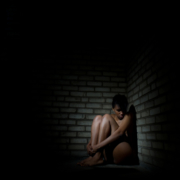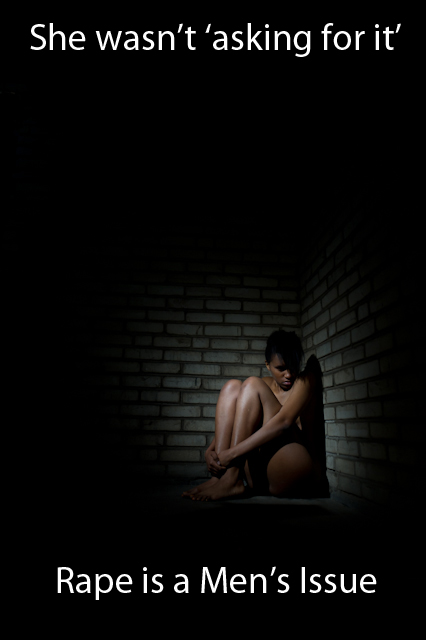How Photography Piques Curiosity
First let me say that I want to apologize to all my readers for not writing often enough recently. I have been working on a personal project that is very important to me and has taken much of my time. I will make a stronger effort to write more often. More about that project shortly.
While working on this project I have been trying to create images that add value to the point and that make people what to know more. The point of the photography was and is to make people take the time to learn more. Each image that I create for the project needs to be impactful and it needs to create a feeling. It is not a stretch for me to make images that tell stories or that make the viewer curious to learn more. In fact, it is my job.
The project that I am working on was actually a challenge that was made to a group of men due to a sexual assault that happened in my area. The challenge was for a man to find a way to get out a message about sexual harassment and why our rape culture is not acceptable. I took that challenge.
The project has become a training of sorts; a training from a conversation that has been called “Rape is a Men’s Issue.” I have developed an outline for conversation, not a monolog, that hopefully will make men aware of their actions and how they can make others uncomfortable and feel objectified (if anyone would like a copy of this outline please use the contact page and request a copy).
But back to the point of how an image can pique the curiosity of the viewer: as I said I want people to want to learn more when they see an image. I want them to want need to learn more. An image of a woman isn’t enough; the image has to say something. The image here, I feel, shows a woman in a lonely space, she is exposed, alone, afraid to look up. Why?
When we read the text that is included it takes us emotionally closer to the woman in the image and it makes me, at least, want to know more. That is the point of the image, to make the viewer want to know more and then read any copy that is in or near the image. It is an invitation to take an action and that action is to learn more.
This is just a single simple image and yet it says so much and at the same time says so little. So what happened to this woman? Why is she alone and naked in this space? Why isn’t she looking at the camera? What happened to make her so removed? We may never know but we just have to ask.





No offense, but this photo has a very seductive overtone. A fantasy element. I recently did a shot of a rape victim – showing her two black eyes, broken nose and split lip. And that was just the damage above the neck. Nothing sexy at all about the aftermath of an attack like this.
BD
You are looking in the right direction. I hope you create a change in our world.
Bill – I wasn’t seeking a true victim. If I was it would be much more brutal. Also remember that not all victims are brutalized. In fact the majority have no “visible” injuries. Date rape can be non violent; If i person is unable to give consent for any reason (intoxication, drugged, etc.) it is still rape.
Vern – So do I. The session will be at the Friends Center in Philadelphia Monday at 6pm if you know anyone in this area, let them know!
Michael your picture does make me want to know more so I believe you are going the right way. Vern – Michael’s answer to you is spot on. As horible as violent rape is, it is the non-violent rape that is harder all the way around. It is harder for people to believe the victim, it is harder for the woman to come to grips with the whys and the accusations, it is also a mainly silent crime. Out of all rapes it is the non violent ones that go unreported the most. When it happens you don’t believe that someone that you know and many times trust is doing such a dispicable thing. You are easily overpowered and by the time you even think about fighting back it is too late. There is a numbness and an inability to act that comes from such a henious betrayal. So to me the picture is not seductive but sad and shows a woman betrayed.
Great work and great comments Michael, vern, and Terri – comments like Bill’s illustrate exactly why these campaigns and discussions are necessary (I really don’t mean to gang up on you, Bill, but it’s important to illuminate misconceptions society seems to hold about consent and intimate violence). Until very recently in fact, the FBI’s definition of rape was “carnal knowledge of a female forcibly and against her will”, ignoring not only that men, too, are often rape survivors but excluding the wonderful, beautiful idea of consent. (They have thankfully been revised to be gender neutral and include language of any sexual penetration of any kind “without the consent of the victim”.)
With news breaking of a recent study finding nearly 20% of women have been raped or faced an attempted rape in their lives, 1/3 have experienced some kind of sexual violence (rape, beating, stalking, or any combination thereof), and 1 in 71 men have been raped the need for more and more public discourse on the topic of sexual health and intimate violence becomes clearer and clearer every day.
http://www.nytimes.com/2011/12/15/health/nearly-1-in-5-women-in-us-survey-report-sexual-assault.html?_r=1&src=tp&smid=fb-share
Vern I apolpogize! I had meant to direct my comment to Bill.